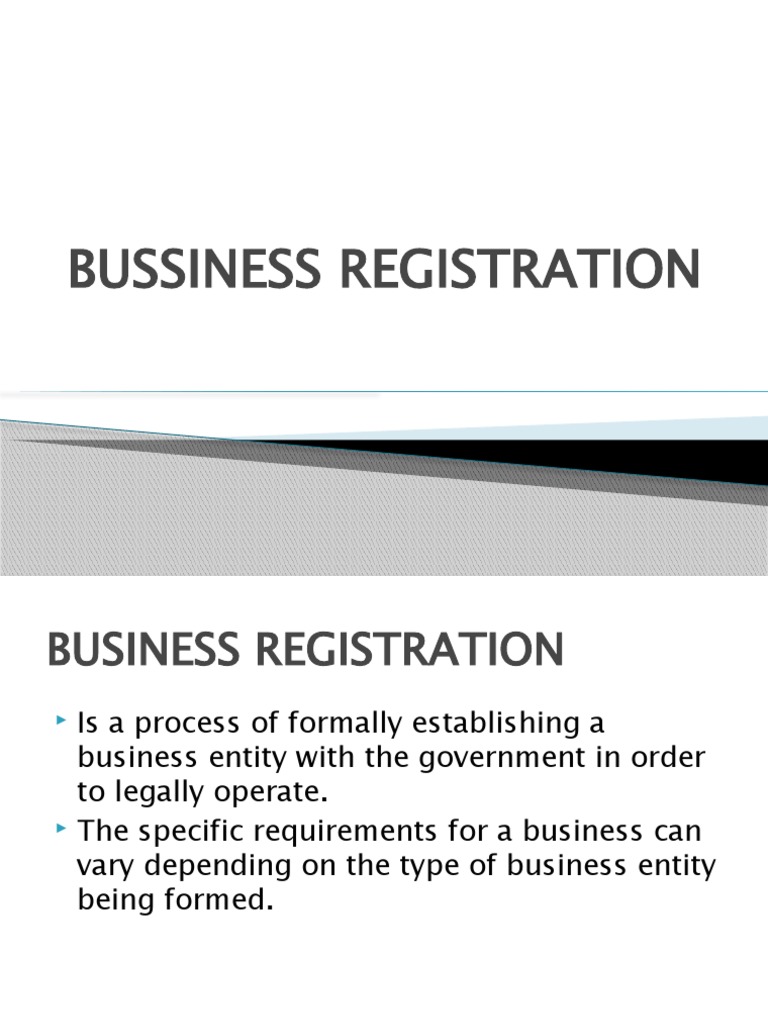
Starting a new business is an exciting venture, but before you can officially launch, you need to complete the crucial step of business registration. Business registration is the process of legally registering your company with the appropriate government authorities, allowing you to operate legally and protect your business interests. Whether you’re starting a small online store or a large corporation, understanding the ins and outs of business registration is essential for achievement. This thorough guide will walk you through everything you need to know about business registration, including why it’s crucial, how to select the right business structure, the steps involved in the registration process, common mistakes to avoid, and tips for a smooth registration experience. Let’s dive in and explore the world of business registration!
Why is Business Registration crucial?
Registering your business is more than just a formality; it’s a crucial step that offers numerous benefits. First and foremost, registration gives your business legal recognition. This means you can enter into contracts, open bank accounts, and obtain licenses and permits in the name of your company. Without registration, your business may not be recognized as a separate legal entity, potentially exposing your personal assets to liability.
Furthermore, registration enhances your credibility and trustworthiness. Customers, suppliers, and investors are more likely to do business with a registered company, as it demonstrates a commitment to professionalism and compliance. Registration also allows you to protect your brand by registering your business name and logo, preventing others from using them without your permission. In addition, registering your business can offer access to funding opportunities, such as loans and grants, which are often available only to registered businesses.
Choosing the Right Business Structure
Related Post : bussines apps
Before you begin the registration process, it’s essential to select the right business structure for your company. The structure you select will impact your liability, taxation, and administrative requirements. Common business structures include sole proprietorships, partnerships, limited liability companies (LLCs), and corporations.
A sole proprietorship is the simplest structure, where the business is owned and run by one person, and there is no legal distinction between the owner and the business. Partnerships involve two or more individuals who agree to share in the profits or losses of a business. LLCs offer limited liability protection, separating the owner’s personal assets from the business’s debts and obligations. Corporations are more complex structures that are legally separate from their owners and offer the greatest liability protection. Each structure has its own benefits and disbenefits, so it’s crucial to carefully consider your options and select the one that optimal suits your needs.
Steps to Register Your Business
The specific steps to register your business will vary depending on your location and the type of business structure you select. However, here are some general steps to follow:
1. select a Business Name: select a unique and memorable name for your business. Make sure the name is not already in use and complies with any naming requirements in your jurisdiction.
2. Register Your Business Name: Register your business name with the appropriate government agency. This may involve filing paperwork and paying a fee.
3. Obtain an Employer Identification Number (EIN): If you plan to hire employees or operate as a corporation or partnership, you’ll need to obtain an EIN from the IRS.
4. File Articles of Incorporation or Organization: Depending on your business structure, you may need to file articles of incorporation (for corporations) or articles of organization (for LLCs) with the state.
5. Obtain Licenses and Permits: study and obtain any necessary licenses and permits to operate your business legally. This may include business licenses, permits for specific activities, and zoning permits.
6. Comply with Tax Requirements: Register with the appropriate tax authorities and comply with all tax requirements, including filing and paying taxes on time.
Common Mistakes to Avoid During Business Registration
Registering a business can be complex, and it’s easy to make mistakes along the way. Here are some common mistakes to avoid:
- Failing to study Requirements: Don’t assume that the registration process is the same everywhere. study the specific requirements in your location and for your business structure.
- Choosing the Wrong Business Structure: Carefully consider your options and select the business structure that optimal suits your needs. Don’t rush this decision, as it can have significant implications for your liability and taxation.
- Using a Generic Business Name: select a unique and memorable name for your business. Avoid using generic names that are similar to those of other businesses.
- Failing to Obtain Necessary Licenses and Permits: Make sure you obtain all necessary licenses and permits to operate your business legally. Operating without the proper licenses and permits can outcome in fines and penalties.
- Ignoring Tax Requirements: Comply with all tax requirements, including filing and paying taxes on time. Failure to do so can outcome in penalties and interest charges.
Tips for a Smooth Business Registration Process
To ensure a smooth business registration process, consider the following tips:
- Plan Ahead: Start the registration process well in advance of your planned launch date. This will give you plenty of time to complete all the necessary steps and avoid any last-minute surprises.
- Gather All Required Documents: Before you begin the registration process, gather all the required documents, such as identification, proof of address, and business plans.
- Seek Professional Advice: If you’re unsure about any facet of the registration process, seek professional advice from an attorney, accountant, or business consultant.
- Stay Organized: Keep track of all your paperwork and deadlines. Create a system for organizing your documents and tracking your progress.
- Follow Up: After you submit your registration application, follow up with the pertinent government agency to ensure that it is being processed in a timely manner.
Navigating the world of business registration can seem daunting, but with careful planning and the right resources, you can effectively register your company and set it up for long-term achievement. Remember to study your options, comply with all regulations, and seek professional advice when needed. By taking these steps, you’ll be well on your way to building a thriving business!

